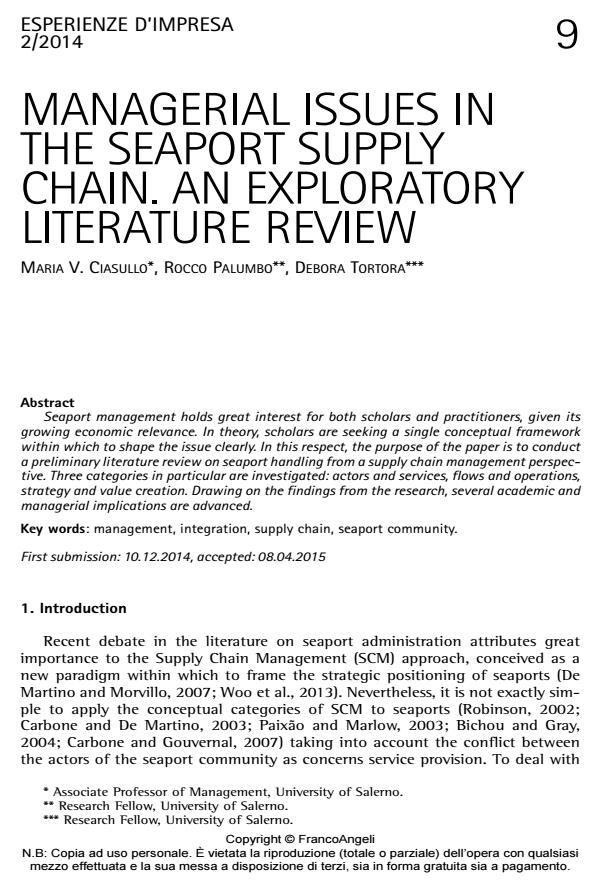Managerial issues in the seaport supply chain. an exploratory literature review
Titolo Rivista ESPERIENZE D'IMPRESA
Autori/Curatori Maria V. Ciasullo, Rocco Palumbo, Debora Tortora
Anno di pubblicazione 2015 Fascicolo 2014/2
Lingua Italiano Numero pagine 24 P. 9-32 Dimensione file 201 KB
DOI 10.3280/EI2014-002002
Il DOI è il codice a barre della proprietà intellettuale: per saperne di più
clicca qui
Qui sotto puoi vedere in anteprima la prima pagina di questo articolo.
Se questo articolo ti interessa, lo puoi acquistare (e scaricare in formato pdf) seguendo le facili indicazioni per acquistare il download credit. Acquista Download Credits per scaricare questo Articolo in formato PDF

FrancoAngeli è membro della Publishers International Linking Association, Inc (PILA)associazione indipendente e non profit per facilitare (attraverso i servizi tecnologici implementati da CrossRef.org) l’accesso degli studiosi ai contenuti digitali nelle pubblicazioni professionali e scientifiche
Seaport management holds great interest for both scholars and practitioners, given its growing economic relevance. In theory, scholars are seeking a single conceptual framework within which to shape the issue clearly. In this respect, the purpose of the paper is to conduct a preliminary literature review on seaport handling from a supply chain management perspective. Three categories in particular are investigated: actors and services, flows and operations, strategy and value creation. Drawing on the findings from the research, several academic and managerial implications are advanced.
Parole chiave:Management, integration, supply chain, seaport community.
Maria V. Ciasullo, Rocco Palumbo, Debora Tortora, Managerial issues in the seaport supply chain. an exploratory literature review in "ESPERIENZE D'IMPRESA" 2/2014, pp 9-32, DOI: 10.3280/EI2014-002002